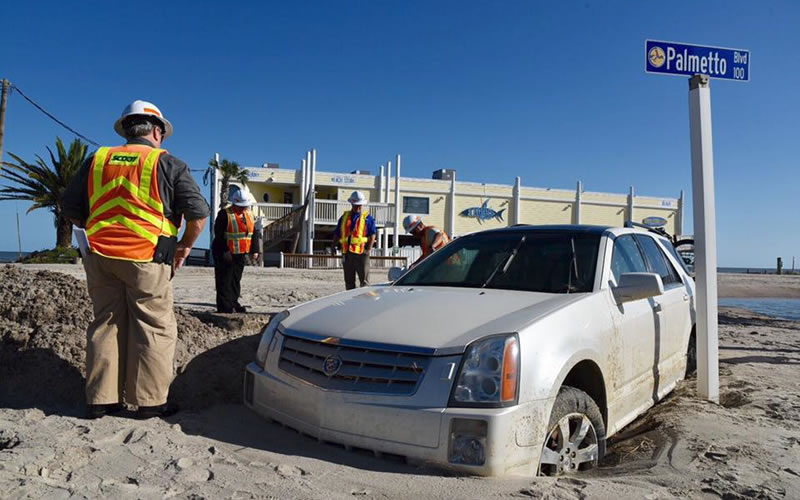
By Andy Brack, editor and publisher | Maybe it’s time to start being more proactive fiscally with the natural disasters that seem to be more frequent in the Palmetto State.
Regardless of the cause — Mother Nature, climate change or the wrath of God — the flooding in the Midlands and Pee Dee in 2015, Hurricane Matthew in 2016 and Hurricane Irma this year have been expensive propositions.
While state and local officials already get specialized training ahead of disasters to be prepared, state government doesn’t budget for storm costs in advance. Instead, it pays the bill long after the storm or disaster has passed.
After the 2015 flooding, the General Assembly appropriated just shy of $180 million to cover various costs — $72 million for a state share of federal funds send through the Federal Emergency Management Agency; $37.3 million for flood-related road repairs; $30 million for beach renourishment; and $40 million for farm aid after farmers experienced major crop losses.
Hurricane Matthew didn’t have as much of a financial impact, but still caused the legislature to appropriate $68 million to match FEMA funds and $5 million for beach renourishment.
There’s no telling what Irma will cost the state for its high winds, heavy rain and storm surge. But you can bet covering the state’s share of damages, overtime and other costs will run in the millions.
With these events seeming to be more frequent, it makes sense for the state to create a special disaster contingency fund that can be tapped, when and if necessary, to pay for whatever is needed to help people and protect property.
Currently, the state is fiscally flat-footed because of the process to access money to pay for storm coasts. It has to apply to the federal government to get an emergency disaster declaration and, if that is granted, it can spend with the assurance that FEMA will cover necessary costs. When it is all done with, the state has to match FEMA spending by covering a quarter to a third of the costs.
With Hurricane Irma, Gov. Henry McMaster requested a disaster declaration on Sept. 6 and received approval within 24 hours.
“We got it in record time the authorization from the administration,” he told Statehouse Report. “We knew in advance that we would have access to those [federal] funds if we met various thresholds.”
But what if the disaster authorization would have taken longer? What if the state could have had the flexibility to start spending earlier to pre-position food, water, gas, personnel, relief supplies and more when the paperwork was, shall we say, in the mail?
A $100 million new disaster relief contingency fund could provide flexibility as the state prepared for an oncoming storm or disaster that could end up costing less over time. And if federal authorization continues to come quickly? The state would have money prepositioned to pay for its share of FEMA aid, instead of having to do special authorizations months later.
“It would be nice to have a fund, but it would be difficult to take money away from other things to create it,” McMaster said, noting South Carolina’s needs for education, health care and other areas.
But having an advance fund with proper controls on it so that it didn’t become a slush fund makes sense because it would relieve future big cuts in just those areas when the state may be able to afford them least. Furthermore, it wouldn’t require to dig as deeply after the passage of a disaster, which would take off some pressure.
South Carolina already has two reserve funds created years ago to show fiscal stability to bond rating agencies. The General Reserve Fund has about $350 million in it now. But it’s only tapped to balance the books when the state’s spending exceeds revenues after a fiscal year ends. The Capital Reserve Fund, 2 percent of the annual budget, is used to retire debt or pay for legislatively-authorized capital projects — after a fiscal year ends. If the money is not spent, the General Assembly can spend it annually on other things, only to replenish it the following year.
Now is the time for a third fund — a future fund — to allow us to be ready fiscally before disaster strikes.
Andy Brack is editor and publisher of Statehouse Report. Have a comment? Send to: feedback@statehousereport.com.


